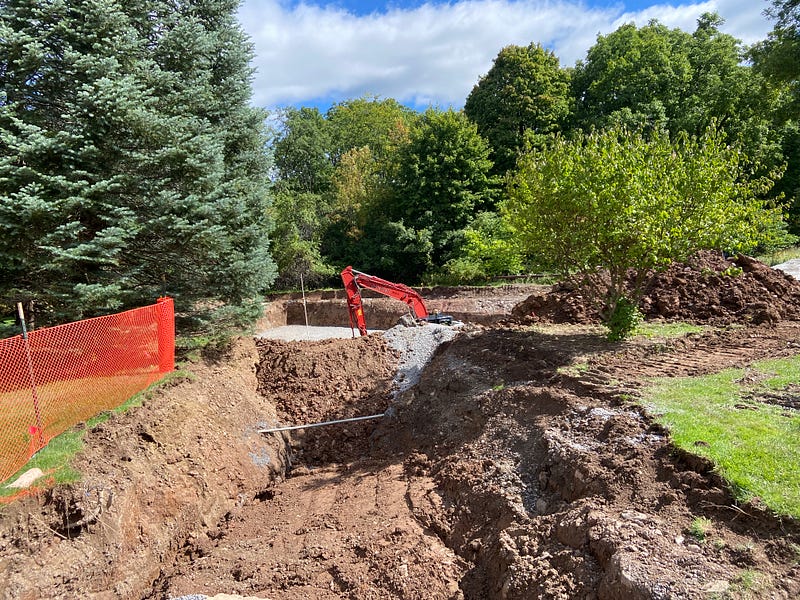
On Sept. 23, construction began near KJ Circle to the surprise of many students. This project is informally known as the “KJ Pit” and is an area dug out of the field usually used as a shortcut from the Martin’s Way bridge to the Glenview parking lot. The official name for this project is the South Campus Stormwater Management Upgrade.
Senior Project Manager Tim Gadziala played a lead role in Hamilton’s initiative to create a total of three stormwater runoff drainage basins in 2022. The last of these lies near the KJ Circle. The planning stage ended in Fall 2021. First, a civil engineering firm “looked at the existing topography on the south campus and created storm-water runoff models and proposed these areas as likely candidates.” Additionally, a landscape architect contributed to the “overall design and plant selection.”
Hamilton has been working to combat runoff since the mid-2000s, but these basins will especially mitigate runoff from storms that have become more frequent and severe as a result of climate change. Gadziala comments, “they usually rank these storms by 10-year storms and 100-year storms. We’ve been seeing 10-year storms like every other year. The Oriskany Creek can’t handle all that water at once, so it overflows its banks, causing flash-flooding.” While Hamilton’s campus itself is not at a high risk for flash-flooding, excessive runoff creates erosion in the Root Glen. Moreover, the Hamilton campus’ high density of paved and built-up land means that water flows off of the land much faster and in higher quantities than if it were green space. The town of Kirkland, which lies just down the hill from Hamilton, is at an especially high risk of flooding from this increased runoff.
During the winter and spring breaks of 2022, adjustments were made to the stream flow pattern of the Kennedy Center (KTSA) Pond. As Gadziala describes, “there’s a structure underneath the bridge, and we restricted the flow and created a higher level [of pond capacity] so we have the ability to hold more water back in a heavy rain event.” In this way, the structure acts like a dam that can release stored water at a controlled rate into the stream.
Then, last April and May, the basin on the back-end of Root Lot was built, and finally the KJ Circle basin construction began last month. These are designed to collect water and release it through a pipe at the bottom of the basin slowly enough to prevent Oriskany Creek from overflowing. Therefore, the basins will generally be dry except after unusually large rainstorms. Gadziala maintains that since the basins were primarily meant to channel storm runoff, they are “not intended for people to walk through but we do hope that with its landscaping, it provides more visual interest than just a mowed lawn.”
The pond in particular posed some challenges for construction since it required Green Apple Way to be blocked. To minimize the disruption to traffic, it was built during academic breaks. A further concern was the weather, since the Root Lot and KJ Circle basins are both built with a liner that gets brittle at temperatures lower than 50 degrees. All three basins are now completed, and the fence that still encircles the KJ Circle basin will stay up until Thanksgiving break in order to give the plants time to better establish themselves in the soil.
At this moment, Hamilton’s only officially published sustainability goal is to become carbon neutral by 2030, but Gadziala emphasizes that Hamilton will continue to take measures to protect the environment and local communities because it is “something we have a responsibility to do.”
















